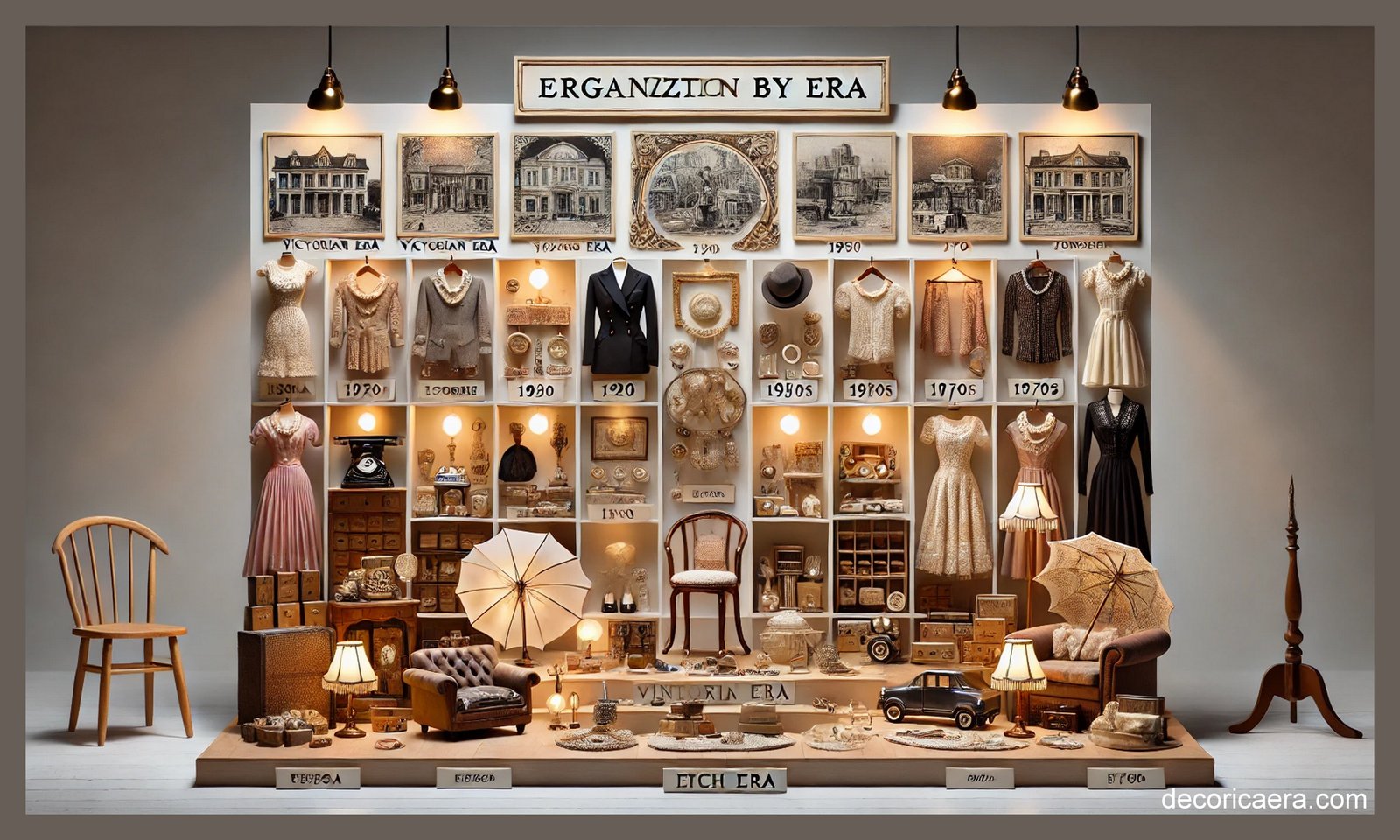Organizing Your Vintage Collection by Era | Expert Tips & Guide
Collecting vintage items is more than a pastime—it's an exploration of the past. Whether you collect clothing, furniture, records, or memorabilia, organizing your collection by era can add structure, beauty, and meaning to your treasures. By categorizing items by time period, you can create a curated display, improve accessibility, and even increase the value of your collection.
In this guide, we’ll walk you through the best ways to sort, store, and showcase your vintage collection by era, ensuring each piece gets the attention it deserves.
Table of Contents
1. Why Organizing by Era Matters
2. Identifying the Eras in Your Collection
3. Sorting Your Collection by Time Period
4. Storage Solutions for Different Types of Collectibles
5. Displaying Your Vintage Collection with Style
6. Labeling and Cataloging for Easy Access
7. Preserving Vintage Items for Longevity
8. Pro Tips for Collectors
9. FAQs About Organizing a Vintage Collection
1. Why Organizing by Era Matters
Organizing your vintage collection by era provides several benefits:
· Historical Context: Understanding the time period of your items adds depth to your collection.
· Better Display Aesthetics: Grouping by era creates a visually appealing and cohesive display.
· Easier Identification: It becomes simpler to locate specific pieces when categorized properly.
· Increased Value: Well-organized collections are more attractive to collectors and buyers.
2. Identifying the Eras in Your Collection
Before organizing, it’s essential to recognize the different time periods represented in your collection. Here are some key eras for vintage items:
· Victorian Era (1837–1901) – Ornate designs, elaborate dresses, antique furniture.
· Edwardian Era (1901–1910) – Lace, delicate craftsmanship, early 20th-century innovations.
· Roaring Twenties (1920s) – Art Deco jewelry, flapper dresses, jazz records.
· Great Depression Era (1930s)—Depression glass, simple but elegant designs.
· World War II Era (1940s) – Military memorabilia, ration-era fashion.
· Mid-Century Modern (1950s–1960s)—Sleek furniture, rock and roll records, and retro kitchenware.
· Vintage Bohemian (1970s)—Psychedelic prints, disco fashion, macramé décor.
· Retro Revival (1980s–1990s) – Neon colors, cassette tapes, arcade memorabilia.
3. Sorting Your Collection by Time Period
Once you’ve identified the eras, start sorting your collection:
· Group items by decade: Place all 1920s items together, all 1950s pieces together, and so on.
· Use separate containers or shelving: Keep each era distinct to prevent mixing.
· Create subcategories: Within each era, separate clothing, home décor, accessories, and other types of collectibles.
4. Storage Solutions for Different Types of Collectibles
Each type of vintage item requires different storage methods:
· Clothing & Fabrics: Store in acid-free boxes or breathable garment bags to prevent damage.
· Paper Items (Magazines, Posters, Photos): Use archival-quality sleeves to protect against yellowing.
· Furniture & Décor: Keep in climate-controlled spaces to prevent warping or deterioration.
· Jewelry & Accessories: Use felt-lined drawers or individual pouches to avoid scratches.
Pro Tip: Avoid storing vintage items in plastic bags, as they can trap moisture and cause damage.
5. Displaying Your Vintage Collection with Style
A well-curated display enhances the beauty of your collection. Try these ideas:
· Shadow Boxes: Perfect for small trinkets, jewelry, and postcards.
· Glass Cabinets: Ideal for showcasing fragile or high-value pieces.
· Mannequins & Dress Forms: Great for vintage clothing to preserve shape.
· Themed Room Setup: Design a corner of your home to reflect a specific era.
Bonus Idea: Rotate displays seasonally to keep your collection fresh and exciting.
6. Labeling and Cataloging for Easy Access
Organizing is not just about aesthetics—it should also make your collection easier to manage.
· Labeling: Clearly mark storage bins and shelves with the era and item type.
· Cataloging: Keep a digital inventory with photos, descriptions, and dates.
· QR Codes: Attach QR codes to items that link to a digital record of details.
7. Preserving Vintage Items for Longevity
To maintain the integrity of your collection:
· Store your items away from direct sunlight to help preserve their color and prevent fading.
· Control humidity and temperature to avoid mold, warping, or rust.
· Use clean hands or wear gloves when handling delicate items to prevent damage or staining.
· Use acid-free materials for storage and framing.
8. Pro Tips for Collectors
· Research Provenance: Understanding the history behind your pieces adds value.
· Invest in Proper Storage: Good storage solutions prevent irreversible damage.
· Join Collector Communities: Connect with other vintage lovers for insights and trade opportunities.
· Rotate Your Collection: This keeps displays interesting and prevents prolonged exposure to light.
9. FAQs About Organizing a Vintage Collection
Q: How do I determine the value of vintage items?
A: Research online marketplaces, consult antique dealers, or use collector guides.
Q: Can I mix different eras in my display?
A: Absolutely! Just ensure the arrangement remains visually cohesive.
Q: How should you safely clean vintage items?
A: Use gentle, era-appropriate cleaning methods, and avoid harsh chemicals.
Q: How do I store delicate fabrics long-term?
A: Use acid-free tissue paper and store in climate-controlled conditions.
Conclusion
Organizing your vintage collection by era is a rewarding process that enhances both the beauty and functionality of your treasures. Whether you're a seasoned collector or just starting out, taking the time to categorize, store, and display your pieces properly will help preserve history while making your collection more enjoyable.
Ready to start organizing? Begin by sorting your items into eras and creating a dedicated space for each period. Share your collection with others, and most importantly, enjoy the journey through time!
Would you like additional suggestions on display ideas or organization tools? Let me know!







